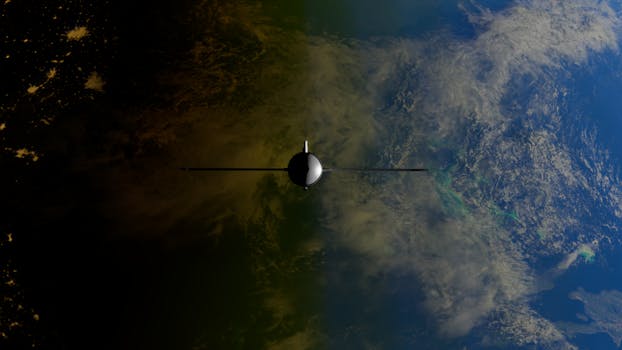Orbiting Innovations: Exploring the Latest in Earth-Observing Technology

Orbiting Innovations: Exploring the Latest in Earth-Observing Technology
Orbiting innovations are transforming the way we perceive and interact with our planet. Earth-observing technology, which involves the use of satellites and other remote sensing platforms to monitor the Earth’s surface and atmosphere, is a rapidly evolving field that is providing unprecedented insights into our planet’s complex systems. From tracking climate change to monitoring natural disasters, Earth-observing technology is playing a vital role in shaping our understanding of the world and informing decision-making at local, national, and international levels.
The latest advancements in Earth-observing technology are centered around the development of more sophisticated satellite systems, which are capable of collecting and transmitting vast amounts of data about the Earth’s surface and atmosphere. These satellites are equipped with advanced sensors and imaging technologies, such as multispectral and hyperspectral sensors, which can detect subtle changes in the environment and provide high-resolution images of the Earth’s surface. For example, the Sentinel-2 satellite, launched by the European Space Agency in 2015, is equipped with a multispectral sensor that can capture images of the Earth’s surface in 13 different spectral bands, providing detailed information about vegetation health, soil moisture, and ocean productivity.
Applications of Earth-Observing Technology
Earth-observing technology has a wide range of applications, from environmental monitoring to natural resource management. One of the key areas where Earth-observing technology is making a significant impact is in the field of climate change research. Satellites such as NASA’s Orbiting Carbon Observatory are providing critical data on carbon dioxide levels in the atmosphere, which is essential for understanding the dynamics of climate change and developing effective mitigation strategies. Additionally, Earth-observing satellites are being used to monitor deforestation, track ocean currents, and predict weather patterns, all of which are essential for managing natural resources and mitigating the impacts of climate change.
Another area where Earth-observing technology is being applied is in the field of disaster response and recovery. Satellites such as DigitalGlobe’s WorldView-4 are providing high-resolution images of disaster-affected areas, which are being used to assess damage, identify areas of need, and prioritize response efforts. For example, in the aftermath of the 2010 Haiti earthquake, satellite imagery was used to identify areas of damage and prioritize search and rescue efforts, saving countless lives and facilitating a more effective response.
Challenges and Future Directions
Despite the many advancements in Earth-observing technology, there are still significant challenges that need to be addressed. One of the key challenges is the need for more effective data management and analysis systems, which can handle the vast amounts of data being generated by Earth-observing satellites. Additionally, there is a need for more international cooperation and coordination, to ensure that Earth-observing data is shared and utilized effectively, and that the benefits of Earth-observing technology are equitably distributed.
In terms of future directions, one of the most exciting areas of research is the development of small satellite systems, which are smaller, cheaper, and more agile than traditional satellites. These small satellites, such as Planet Labs’ Dove satellites, are being used to provide high-resolution images of the Earth’s surface, and are opening up new opportunities for commercial and scientific applications of Earth-observing technology. Another area of research is the development of advanced sensors and imaging technologies, such as synthetic aperture radar and lidar, which are providing new insights into the Earth’s surface and atmosphere.
Conclusion
In conclusion, orbiting innovations are transforming the way we understand and interact with our planet. Earth-observing technology is a rapidly evolving field that is providing unprecedented insights into our planet’s complex systems, and is playing a vital role in shaping our understanding of the world and informing decision-making at local, national, and international levels. As the technology continues to advance, we can expect to see new and exciting applications of Earth-observing technology, from environmental monitoring to natural resource management, and from disaster response to climate change research.



